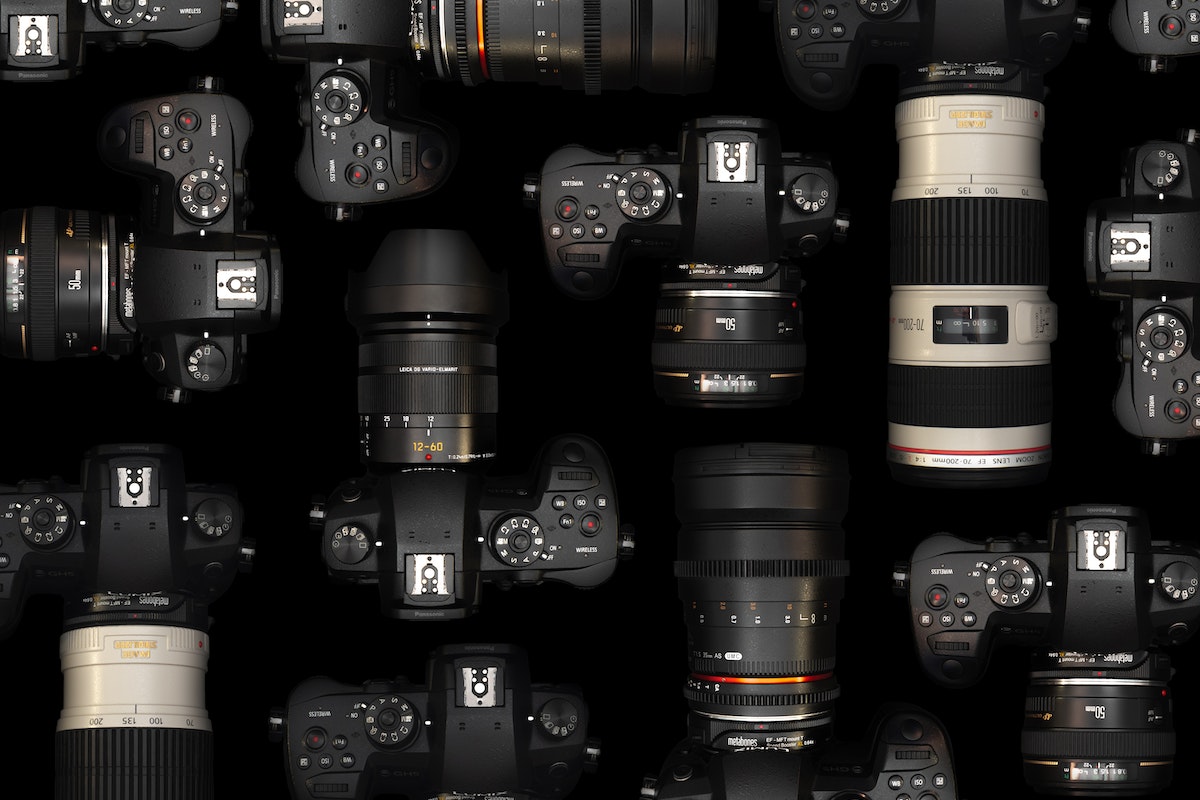Choosing the right lens for your DSLR camera is an important decision. A 50mm or 75mm lens is best for full-frame cameras, as the focal length matches the size of the sensor and can produce a frame image with no distortion. For smaller sensors, 100mm lenses are often used as they create an image circle that’s large enough to cover more of the sensor and provide higher-resolution images. Focal lengths like 15-35mm will be affected by crop when used on smaller sensors due to their wider-angle capabilities, while longer focal lengths like 100-200mm will remain unaffected. The most important thing to remember when choosing lenses for a DSLR is to find one that fits your sensor size and format camera.
For example, if you have a frame camera with a smaller image sensor, you will need to choose lenses that are designed for smaller sensors. Longer focal length camera lenses are great for capturing distant subjects and scenes but will not be suitable for cameras with smaller sensors. On the other hand, shorter focal lengths can be used on all types of cameras but they may not capture the entire scene and require more focus to keep your subject in the frame.
A wide-angle lens is best for capturing large scenes, such as landscapes or city vistas. If you have someone in your image, then a longer lens will help to keep them in the foreground while still capturing the full line of sight. Depending on the kind of images you are taking, it may be beneficial to have both an angle lens and a long lens. This way you can easily switch between them to capture different perspectives and compositions.
When it comes to choosing the right lens for your DSLR, you need to consider your subject and what kind of shot you are looking for. For a wide-angle shot with an expansive view, a wide lens is a good choice. If you’re looking for more detail or to get close-up shots then a 120mm telephoto lens is ideal. An angle lens can add a comical look or make a powerful statement depending on how it’s used.
It’s important to understand the different focal lengths and how they affect your images. A wide-angle lens, such as a 24mm, can give an exaggerated perspective while a telephoto 105mm lens can bring distant objects closer to you. To choose the right camera lens for your DSLR camera, it’s important to consider all of the different focal lengths and how they will affect the image you are trying to create. When shopping for lenses, look at the lens barrel and zoom ring which help determine how much you can zoom in or out on an object.
Focal length is an important factor when choosing lenses for your DSLR camera because it affects not only what type of shots you will be able to take but also what kind of perspective those shots will have. Each focal length has its own unique characteristics that must be considered when framing a shot with a digital camera so make sure you experiment with everything from wide-angle perspectives through telephoto and more in order to capture amazing images using every possible focal length available on your camera!
If you’re looking to purchase a DSLR camera, the first thing to consider is the lens mount. It’s important to check how much frame coverage each lens provides and what type of sensor size is recommended by the manufacturer. Depending on your budget, you may be able to get lenses from a third-party manufacturer that are compatible with your camera at a lower cost than those made by large brands. No matter which routes you decide on, it’s important to do research into different lens mounts and types in order to choose one that fits your needs and captures high-quality pictures!
Macro lenses are great for capturing close-up shots, but if you’re looking for a more general-purpose lens, look for one with a fixed maximum aperture. This will provide consistent results in all lighting conditions and make shooting easier. Large maximum aperture lenses are handy features when it comes to shooting in low light and capturing the shallow depth of field effects. Before buying any lens, make sure it is compatible with your camera body as some frame models require specific lenses. Also, consider whether the resolution is sufficient; reduced resolution images can result from using cheaper lenses that don’t have the highest quality optics.
When choosing camera lenses for your DSLR, it’s important to consider the type of photography you will be doing. If you are shooting a variety of subjects, an affordable zoom lens may be the best choice. A 105mm lens is typically good for portraits and has an effective focal length of 80mm when used with a crop sensor camera. For example, if you have a DSLR with an APS-C sensor model, then the equivalent focal length would be around 120mm. Maximum aperture is also important to consider as this affects how much light can reach the sensors and how sharp images look at different focal lengths.
When it comes to desert photography, like wildlife and the best examples of desert features, the biggest reason to invest in telephoto lenses is that they allow you to take shots from a distance without disturbing the subject. These lenses are also great for taking close-up portraits and capturing fast-moving sports events. If you’re just starting out then a kit lens would be ideal as it usually provides enough flexibility for most general shooting needs. However, if you want something more specialized then investing in telephoto lenses would be your best option.




